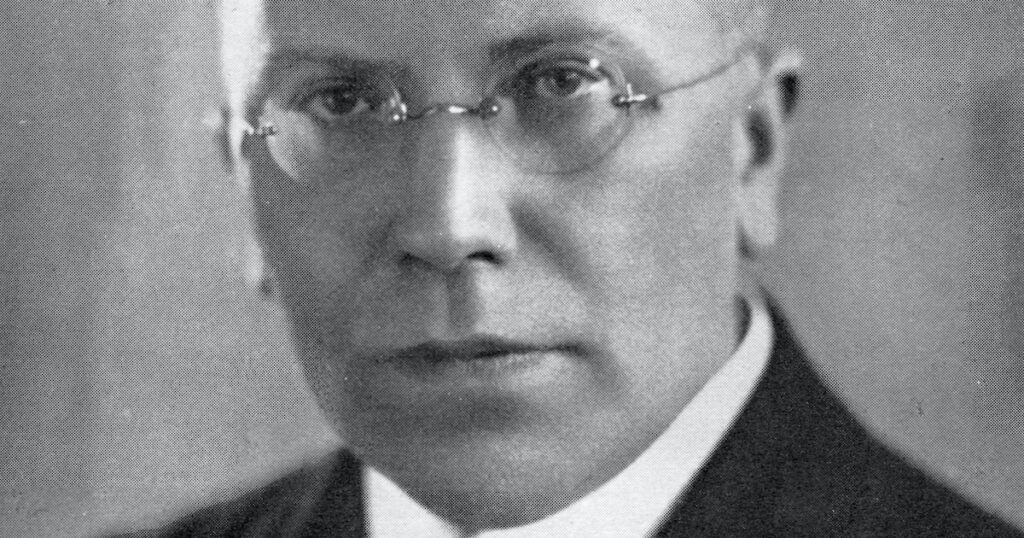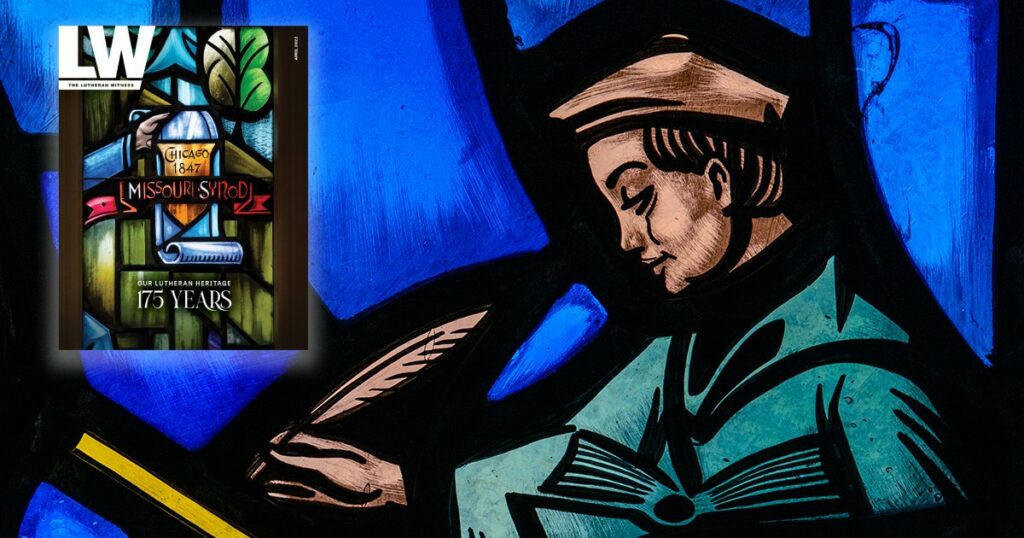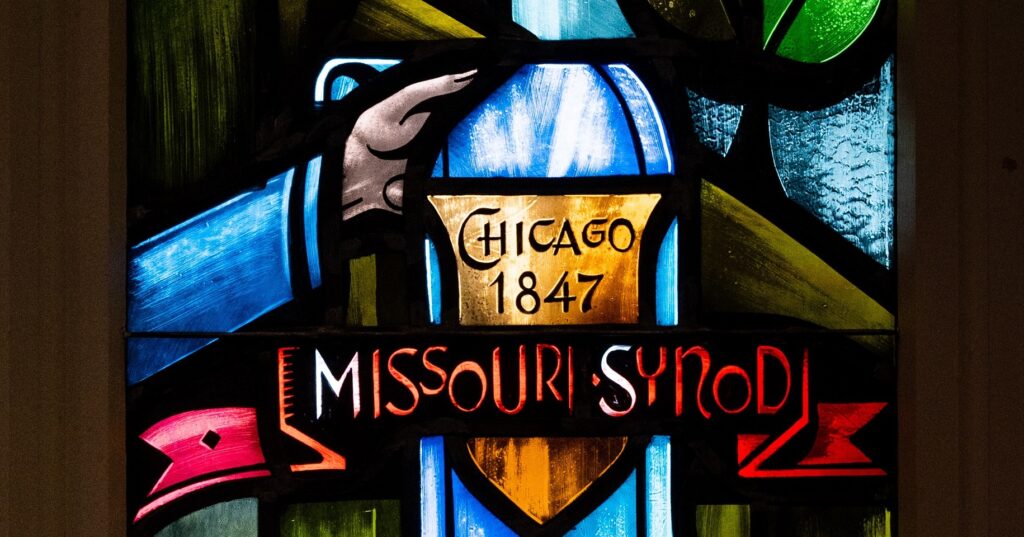Bernard of Clairvaux
A.D. 1090–1153
Though not without error in his life and teaching, this French abbot loved Christ, and his confession of faith rings down through the ages.
In this series, Lutheran historian Molly Lackey will trace the history of the church, from the time of the apostles through the twentieth century. As the Body of Christ, our history transcends time, country and citizenship: “God’s Word is our great heritage.”

Imagine you are in a cell of the abbey in Clairvaux, France, in 1153. The room is dimly lit and quiet. The abbot is dying. Bernard — who founded the abbey — lies on a cot, his breath heavy and slow. Everyone is praying for a blessed end, when the monk becomes agitated, then calm. He is speaking, but you can’t make out his words. He falls silent and still. The monks by his bedside cross themselves, then turn to the rest of the room and announce that Bernard has died. You pull at the sleeve of one of the men who was by his side as he died. “What did he say?” you ask. “Bernard saw the judgment seat of Christ, and there was accused by Satan,” the man replies somberly. “When our Lord asked our Abbot to defend himself, Bernard replied that, though he did not merit heaven, the sufferings of Christ — merited to him — did. He died at peace.”
You might not be too familiar with Bernard of Clairvaux (1090–1153). The medieval French monk and mystic, however, appears on our Synod’s official calendar and is found on Lutheran saint-day calendars from the 19th century. Though his life and teachings were not without error, and some significant ones at that, Bernard is an important example of how our Lutheran faith is connected with Christians of the past.
From pious youth to respected abbot
Bernard was born into a wealthy noble family near Dijon, France, in 1090. Bernard received an exceptional education and had a love of literature, poetry and rhetoric. He was pious and keenly interested in Scripture. After his mother died when he was only 19 years old, Bernard traveled to the nearby Cîteaux Abbey, which was attempting to follow the Rule of St. Benedict, a guide for monastic life authored by Benedict of Nursia (480–550).
In 1113 Bernard asked to join the abbey as a monk. A mere two years later, he and 12 other monks were sent to form a new abbey in the same tradition. Bernard called the new site Claire Vallée (“clear valley”) or Clairvaux. The abbey had a rough start: Bernard was so intent on strictly upholding the Rule of St. Benedict that he made himself ill — likely permanently damaging his health, just as Martin Luther did as a monk. When his friends convinced him to relax the strict rules, however, the monastery began to thrive.
Bernard is also remembered for his role in defending the church against confusion and heresy, as well as his involvement in the Second Crusade. Nearly 50 years after the original crusade, the pope called for a return to the Holy Land to overthrow the Muslim Turks who were threatening Jerusalem and surrounding areas. This sequel to the First Crusade was not as popular. Bernard was tasked with encouraging Europeans to join the fight, sometimes dangerously blurring the line between Law and Gospel to do so.
Many enlisted, expecting temporal and eternal gains — but the crusade failed miserably, and Bernard was blamed. Disappointment over the failed venture, coupled with his damaged health, likely contributed to his death in 1153. The abbey Bernard founded at Clairvaux met a sad end as well — falling into decline, and then being seized by the government of Revolutionary France and converted into a prison, which it remains to this day. How fragile, Lord, are our lives and legacies!
Faith in Christ, despite his times
On a positive note, Bernard has historically been credited with penning the Latin poem Salve mundi salutare (“O Savior of the World, I cry to Thee”) that formed the basis of the hymn “O Sacred Head, Now Wounded” (LSB 449/450). He is also thought to have authored other poems that have been adapted into hymns, like “O Jesus, King Most Wonderful” (LSB 554), but it can be challenging to definitively identify the authors of medieval texts due to a lack of early copies.
We have many of Bernard’s other writings, including many of his sermons. His work is not without unbiblical teachings that the Reformation would later reject, such as Mary as mediator between sinners and Jesus. But while a man of his time, subject to its doctrinal and political winds, Bernard’s writings nevertheless show a reliance on Christ would later inspire and encourage Luther himself.
Some 400 years later, Lutheran theologian Martin Chemnitz wrote his four-volume response to the Counter-Reformation, The Examination of the Council of Trent. Chemnitz drew Tridentine Catholicism and his own Lutheran faith through a fine-toothed comb, identifying doctrinal disagreements but also tracing the golden thread of sound teaching found sparkling throughout the varied tapestry of church history. One of the theologians that Chemnitz cites as defending the Lutheran view of justification is Bernard of Clairvaux and his deathbed confession of faith. Chemnitz writes:
In the Life of Bernard, ch. 12, we read: “When he appeared to be drawing his last breath, as his mental powers failed, he seemed to be presenting himself before the tribunal of his Lord. But there was also present over against him Satan, assailing him with wicked accusations. But when he had said his say, the man of God also had to speak on his part. Undaunted and unperturbed, he said, ‘I confess that I am not worthy and that I cannot obtain the kingdom of heaven through my own merits. However, my Lord is obtaining it with a twofold right, namely, through the inheritance of the Father and by the merit of His suffering; with the one He is content, and the other He gives to me; because of this gift, since He vindicates this to me by right, I am not disturbed.’ By this word the enemy was routed.” (Examination I:510–511)
May we, like Bernard, trust in Jesus till our final breath.
Editor’s Note: The next installment of this series, on the 13th century Christian mercy worker Elizabeth of Hungary, will be posted three weeks from today. Check back then or follow us on social media to catch it!
Image: “Saint Bernard of Clairvaux,” Workshop of Fra Filippo Lippi, c. 1447–1469.






